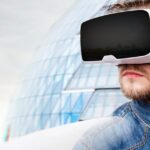The Evolution of Personal Computers: From Mainframes to Mobile Workstations
The personal computer (PC) has come a long way since its inception, transforming the way we work, communicate, and access information. From the early days of massive mainframes to the sleek and powerful laptops of today, the evolution of personal computing has been marked by innovation, portability, and ever-increasing capabilities.
Mainframes and Minicomputers: The Dawn of Computing
The concept of personal computing dates back to the mid-20th century when computers were massive machines that filled entire rooms. Mainframes and minicomputers were the predecessors to the modern PC, used primarily by large corporations, government agencies, and academic institutions for data processing and calculations. These machines required specially trained operators and were far from accessible to the general public.
The Birth of the Microcomputer: Popularizing Personal Computing
The late 1970s witnessed a pivotal moment in the history of personal computing with the introduction of the microcomputer, often referred to as the “micro.” These early microcomputers, like the Altair 8800 and Apple I, were sold as kits or assembled machines, bringing computing power to enthusiasts and hobbyists. The release of the IBM Personal Computer (IBM PC) in 1981 marked a significant shift, introducing a standardized platform that laid the foundation for future PC development.
Graphical User Interfaces and the Rise of the Desktop PC
The 1980s and 1990s were marked by advancements in user interfaces. Graphical user interfaces (GUIs) revolutionized how people interacted with computers. Apple’s Macintosh introduced the concept of a point-and-click interface, while Microsoft’s Windows operating system brought GUI to the masses. These developments paved the way for the rise of desktop PCs, complete with monitor, keyboard, and mouse.
Laptops and Mobile Computing: The PC Goes Portable
The 1990s also saw the emergence of laptops, which brought newfound mobility to personal computing. Laptops combined the power of a desktop with the convenience of portability, allowing users to work and communicate on the go. As technology advanced, laptops became increasingly lightweight and powerful, providing a balance between performance and mobility.
The Digital Revolution: PCs in the Internet Age
The turn of the century brought the internet to the forefront of personal computing. PCs became gateways to the digital world, enabling users to browse the web, communicate via email, and participate in online communities. The proliferation of broadband internet connections further accelerated the integration of PCs into daily life.
Modern PCs: Powerhouses of Productivity and Creativity
Today’s PCs are marvels of engineering, packing immense computing power into sleek and compact forms. High-performance processors, ample memory, and fast storage drives enable tasks that were once the domain of specialized workstations. Additionally, graphics capabilities have expanded to support gaming, digital content creation, and virtual reality experiences.
The Future of PCs: Adapting to Changing Trends
As technology continues to evolve, the future of PCs is shaped by trends such as artificial intelligence, edge computing, and hybrid work environments. AI-driven applications, cloud computing, and remote collaboration tools are redefining how PCs are utilized in both professional and personal contexts.
In conclusion, the evolution of personal computers reflects the relentless march of technological progress. From humble beginnings as room-filling mainframes to the versatile and connected devices of today, PCs have undergone a remarkable transformation. As we move forward, the PC will continue to adapt and innovate, shaping the way we interact with technology and the world around us.













Average Rating